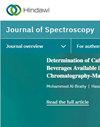利用组织中痕量金属生物标志物直接快速检测癌症的无峰化学测量激光诱导击穿光谱方法的评价
IF 2.1
4区 化学
Q4 BIOCHEMICAL RESEARCH METHODS
引用次数: 0
摘要
在空气和大气压下进行直接快速分析的能力是激光诱导击穿光谱(LIBS)对身体组织中疾病生物标志物金属的诊断定量的显著吸引力。然而,精确的痕量分析受到基质效应和明显的背景的限制,因为组织等离子体密度大,大多数线在光学上很厚,掩盖了细微的(无峰)分析物信号。在这项工作中,基于单次射击(为了快速和无损)和具有光谱特征选择的人工神经网络多变量校准策略的无峰化学LIBS方法对模型软组织中铜(Cu)、铁(Fe)、锰(Mg)、镁(Mg)和锌(Zn)的直接痕量定量分析的实用性进行了评估。与生物金属相对应的光谱特征(之所以这么说,是因为这些金属是组织生物化学的内在特征)是通过在熔融石蜡中增加已知的人体代表浓度而产生的。通过对牡蛎组织认证标准物质的分析,所建立的多变量分析模型的准确度达到≥95%。分析模型在肝脏、乳房和腹部组织活检上进行了测试。将该模型应用于临床组织的结果表明,肿瘤的存在(包括严重程度)是恶性的还是良性的,与病理检查报告一致。本文章由计算机程序翻译,如有差异,请以英文原文为准。
Evaluation of a Peak-Free Chemometric Laser-Induced Breakdown Spectroscopy Method for Direct Rapid Cancer Detection via Trace Metal Biomarkers in Tissue
The ability to perform direct rapid analysis in air and at atmospheric pressure is a remarkable attraction of laser-induced breakdown spectroscopy (LIBS) for the diagnostic quantification of disease biomarker metals in body tissue. However, accurate trace analysis is limited by matrix effects and a pronounced background that masks the subtle (peak-free) analyte signals because tissue plasma is dense and most lines are optically thick. In this work, a peak-free chemometric LIBS method based on a single-shot (for rapidity and nondestructiveness) and an artificial neural network multivariate calibration strategy with spectral feature selection was evaluated for its utility for direct trace quantitative analysis of copper (Cu), iron (Fe), manganese (Mg), magnesium (Mg), and zinc (Zn) in model soft body tissue. The spectral signatures corresponding to the biometals (so-called because the metals are intrinsic to tissue biochemistry) were generated by spiking their known human-body-representative concentrations in molten paraffin wax. The developed multivariate analytical model achieved ≥95% accuracy as determined from the analysis of oyster tissue-certified reference material. The analytical models were tested on the liver, breast, and abdominal tissue biopsies. The results of applying the model to the clinical tissues indicated the absence or presence (including severity) of cancer as either malignant or benign, in agreement with the pathological examination report.
求助全文
通过发布文献求助,成功后即可免费获取论文全文。
去求助
来源期刊

Journal of Spectroscopy
BIOCHEMICAL RESEARCH METHODS-SPECTROSCOPY
CiteScore
3.00
自引率
0.00%
发文量
37
审稿时长
15 weeks
期刊介绍:
Journal of Spectroscopy (formerly titled Spectroscopy: An International Journal) is a peer-reviewed, open access journal that publishes original research articles as well as review articles in all areas of spectroscopy.
 求助内容:
求助内容: 应助结果提醒方式:
应助结果提醒方式:


